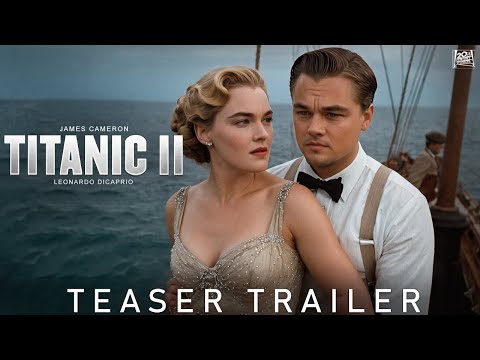Titanic

Titanic II (2025): A Chilling Modern Voyage Into Familiar Waters
Nearly thirty years after James Cameron’s Titanic left its mark on cinema, Titanic II emerges not as a sequel in the traditional sense, but as a bold, imaginative echo—one that mirrors history while reflecting modern fears. Under the direction of Joseph Kosinski (Oblivion, Top Gun: Maverick), this new tale doesn’t resurrect the past, but interrogates it through a contemporary lens.
The film takes place in 2023, when a billionaire tech entrepreneur, Victor Langston (Ralph Fiennes), unveils the Titanic II—a full-scale, high-tech replica of the doomed original. Outfitted with AI systems, cutting-edge engineering, and sustainable materials, the ship is sold to the public as a tribute and triumph: a floating symbol of humanity’s progress. But progress, as the film suggests, doesn’t always equal wisdom.

Florence Pugh stars as Emily Dawson, a marine archaeologist with a personal connection to the first Titanic disaster—her great-grandmother survived the original sinking. Emily is brought aboard as a historical consultant for the onboard museum but quickly finds herself questioning Langston’s motives. Opposite her is Marcus Hale (John Boyega), a sharp and skeptical ex-naval officer now serving as head of ship security. Together, they sense that the voyage is on far more uncertain footing than anyone wants to admit.
As Titanic II retraces its predecessor’s ill-fated route across the Atlantic, a cyberattack disables the vessel’s AI-driven infrastructure. With critical systems compromised, the once state-of-the-art ship begins to drift, pulled toward hazardous Arctic territory. As tensions rise and modern technology collapses, the passengers and crew must confront the possibility that history may be repeating—not due to nature’s wrath, but from digital complacency and unchecked ambition.

Rather than replicate the romance and tragedy of its 1997 predecessor, Titanic II explores different terrain—emotional, psychological, and political. The film touches on themes of inherited trauma, our increasing dependence on automation, and the unsettling trend of remaking history for profit or prestige.
Pugh delivers a grounded, powerful performance as a woman torn between honoring the past and fearing its repetition. Boyega injects the story with tension and urgency, while Fiennes brings an unsettling charisma to Langston, whose vision of legacy borders on obsession.
Kosinski’s direction shines with stark, sweeping visuals—from gleaming ship interiors to storm-lashed decks and haunting underwater sequences. IMAX shots, tactile set design, and immersive soundscapes place viewers right in the heart of the chaos. Composer Hildur Guðnadóttir subtly weaves motifs from the original score, layering in ghostly echoes of James Horner’s haunting melodies without leaning on nostalgia.

There’s a quiet weight that hangs over the film—the knowledge of what came before. Through salvaged relics, archival recordings, and submerged memories, the shadow of the first Titanic is never far. And yet, Titanic II finds its own voice.
Not everyone will embrace this continuation. Some may bristle at its audacity. But where it could have settled for imitation, the film chooses introspection instead. It warns against the arrogance of thinking we’ve moved beyond the mistakes of the past simply because we’ve updated the hardware.

Final Take: Titanic II is a gripping, visually mesmerizing exploration of how the future can still be haunted by history. It’s not about reliving a tragedy—it’s about asking why we’re so eager to recreate it.